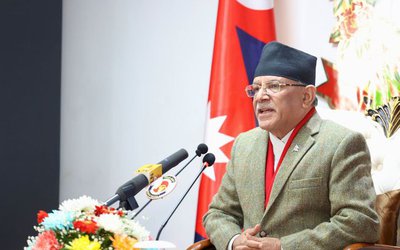“I tell them that I used to trust my husband a lot, but I was not so fortunate. My husband betrayed me and now I am infected with HIV. You cannot trust anybody. Your husband might be engaging in unsafe sex practices and taking risks in India,” said Prabha Dhanuk,from Accham district. Dhanuk is not the only one who faces such a situation.
Made with the support from UNAIDS, a report documents the contribution of people living with HIV and AIDS towards achievement in Nepal of Millennium Development Goal 6 and 7, many voices like that of Dhanuk were collected.
As a district that heavily relies on remittances earn from India, Accham district is badly affected by HIV and there are many women like Dhanuk. Those women say:” Even if we try to convince our husband to use condoms, they refuse.”
UNAIDS recently released a fact sheet showing that HIV is the leading cause of death and diseases among women of reproductive age 15-49 worldwide. Nepal is also vulnerable in this context. The prevalence of HIV/AIDS among women in Nepal is also rising alarmingly.
According to the date released by National Center for AIDS and STD Control in August 2011, out of 63.528 people infected with HIV, 22.019 among them are women. As recorded up to August 17, 2011, out of 18.535, 4.939 are housewives. Only 104 female clients of sex workers are infected by HIV.
This data reveals an alarming rate of HIV infections among housewives. According to UNAIDS, the number of women living with HIV in Asia, has risen from 19 percent in 2000 to 35 percent in 2008 in comparison to men. Similarly, violence against women and girls is key driver of HIV epidemic. According to report, up to 70 percent of women experience violence in their lifetime. “Country studies indicate that the risk of HIV among women, who have experienced violence, may be up to three times higher than among those who have not. Women, who are fear or are experiencing some kind of violence, are less likely to negotiate for safe sex, go for HIV testing, share their HIV status and access treatment.
Prabha Dhanuk also reports that women who keep condoms in the house may be targets of discrimination. People will say: “What the hell are you doing keeping condoms? Do you have sex with other men? “We need to raise awareness,” she says.
Generally, women are at a greater risk of heterosexual transmission of HIV. Out of 30.155-33.142 people that are injecting drugs in Nepal it is estimated that around 1.598-1.788 among them are female. At a time when Nepal’s emigration rate of male continues to rise, it increases the risk of HIV infection from husband to wife. Even the female emigration is growing and it is reportedly around 4 percent. According to recent studies, women are more vulnerable to HIV infections. Although many steps have already been taken to stabilize the HIV infections, it is yet to reach vulnerable groups of people.
There need to raise awareness about the particular vulnerabilities of women and girls to HIV infection. Recognize the fundamental human rights of women living with HIV, including sex workers, women and girls who inject drugs and those in close settings as a prison.
As Nepal has been celebrating International Women Day by organizing various programs, it is yet to see how the government will carry out a program to contain HIV infection among women.
- NIS 2024: Few Deals, Many Rhetoric
- May 12, 2024
- LATE SAMBHU PRASAD GYAWALI: Legendry Lawyer
- May 03, 2024
- TBM’S POPULARITY: Upper Arun And Dudhkohshi Next
- May 02, 2024
- QATAR AMIR’S STATE VISIT: Five Agreements
- Apr 28, 2024
- BIPIN JOSHI: Call For Release
- Apr 21, 2024
















